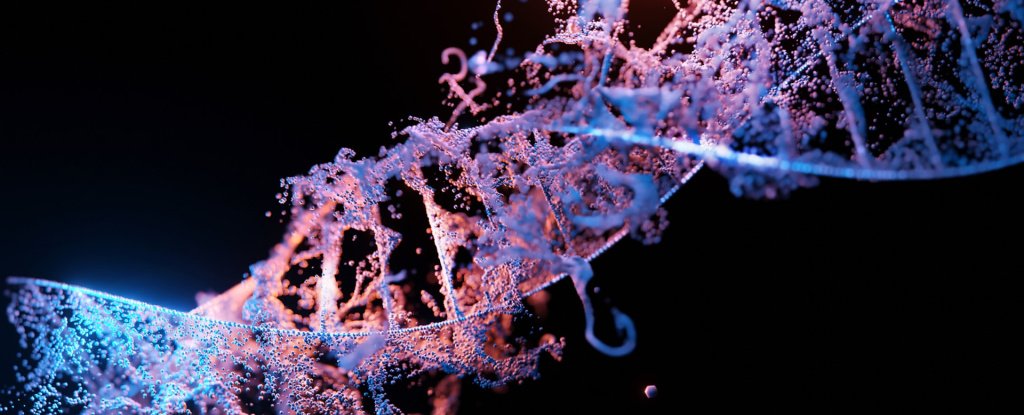
Researchers have filled in large number of missing bits of human DNA, yielding the most ridiculously complete, gapless arrangement of the human genome at any point delivered, bar one minuscule chromosome.

(Sangharsh Lohakare/Unsplash
The accomplishment, made conceivable by consistently further developing genome sequencing advances and a consortium of in excess of 100 researchers, sets another benchmark for getting human hereditary variety in the entirety of its greatness.
The group has additionally adjusted a large number of underlying mistakes in our past most complete reference genome during the cycle. The accomplishment can’t be put into words: It holds immense potential for better getting human advancement and sickness.
“Really completing the human genome succession was like putting on another sets of glasses,” says bioinformatician Adam Phillippy of the US National Human Genome Research Institute.
“Now that we can plainly see everything, we are one bit nearer to understanding what everything implies.”
Since the time the send off of the Human Genome Project over 30 years prior, hereditary sequencing advances and information handling pipelines have been getting quicker, less expensive and more exact, permitting scientists to test, arrangement and contrast more genomes and each spending year.
In any case, tremendous pieces of DNA – adding up to around 8% of the human genome – were all the while missing from the latest reference succession that researchers use as a layout to collect recently sequenced DNA tests.
Presently, researchers have sorted out those pieces of the human genome which have for quite some time been ‘unsequenceable’ to gather the most ridiculously complete reference genome to date, sharing their discoveries in an assortment of six papers, distributed in the diary Science.
The considerable examination exertion adds around 200 million base sets of hereditary data – a full chromosome’s worth – to the human genome. The vast majority of these are situated in telomeres, the defensive covers on the finish of every chromosome, and in the thick center areas of chromosomes, called centromeres.
“At long last, from one tip to another, telomere to telomere, we have a gathering of the genome we can check out,” says Winston Timp, a biomedical architect at Johns Hopkins University.
It’s wild to think there were such countless holes in the human genome as far as we might be concerned; a large number of missing bases, truth be told. In any case, it addresses the overwhelming excellence and sheer intricacy of the bucketloads of DNA packed inside our cells, encoding each private detail of life.
“We’ve gotten a huge comprehension of human science and sickness from having about 90% of the human genome,” says bioinformatician David Haussler of the University of California (UC) Santa Cruz Genomics Institute.
“In any case, there were numerous significant perspectives that lay covered up, away from science, since we didn’t have the innovation to peruse those segments of the genome.”
Researchers initially planned the human genome many years prior by sorting out and overlaying ‘short peruses’ of DNA that caught just a few hundred bases all at once. Then, long-read sequencing empowered them to figure out already ‘mixed up’ dull pieces of DNA that had long challenged research.
“These pieces of the human genome that we haven’t had the option to read up for 20 or more years are essential to how we might interpret how the genome functions, hereditary sicknesses, and human variety and advancement,” says UC Santa Cruz geneticist Karen Miga, who headed up the consortium of specialists.
HumanGenomeSequencingMethodsCirca2016Human genome sequencing strategies. (NIH)
The new ‘gapless’ genome, which currently sums north of 3 billion bases, could likewise reveal insight into how sets of chromosomes get pulled separated and partition according to plan, the mechanics of alleged hopping qualities that jump around the genome, and the maybe urgent job of significant length of duplicative DNA.
“Opening up these new pieces of the genome, we figure there will be hereditary variety adding to various qualities and illness risk,” says developmental scholar Rajiv McCoy of Johns Hopkins University. Yet, he adds, “there’s a part of this that is as, we don’t have the foggiest idea yet what we don’t have the foggiest idea”.
Instead of being a mosaic of arrangements grouped from numerous people, the brand new reference genome was assembled utilizing an extraordinary kind of cell line that has two indistinguishable duplicates of every chromosome (dissimilar to most human cells, which convey two somewhat various duplicates).
That implies there’s actually loads of work to be done to conclude the reference genome (the Y chromosome actually should be done) yet the gathering is creeping nearer and nearer to at last sequencing each and every nucleotide of human DNA.
While analysts have high expectations that the close total genome, named T2T-CHM13, could make ready toward a more comprehensive portrayal of human variety, the field at large is as yet wrestling with how to determine recorded shameful acts in genome science and the absence of variety in hereditary investigations which takes steps to intensify medical services inconsistencies.
In any case, groups of researchers have proactively utilized the close total reference succession to reveal multiple million already obscure variations in the human genome, all of which will enhance how we might interpret how individual hereditary contrasts can add to specific illnesses.
Obviously, the reality of the situation will surface at some point in the event that customized medication can genuinely satisfy its guarantee of conveying reasonable, designated medicines in view of a person’s hereditary make-up, however analysts are energized.
“Later on, when somebody has their genome sequenced, we will actually want to recognize each of the variations in their DNA and utilize that data to more readily direct their medical care,” says Phillippy.
The exploration was distributed in Science.
